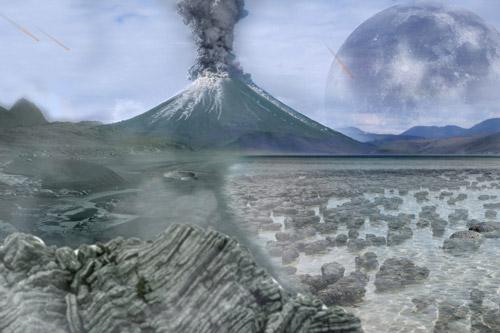New insights into the ancestors of all complex life

The earliest metabolisms of the Archaea were based on the anaerobic reduction of carbon dioxide, and likely evolved during the earliest period of Earth's evolutionary history. Credit: Tim Bertelink
The Archaea are one of the Earth's most genetically and ecologically diverse groups of micro-organisms.
They thrive in a bewildering variety of habitats, from the familiar – soils and oceans – to the inhospitable and bizarre, such as the boiling acid pools of Yellowstone National Park.
The research provides a new evolutionary tree for the Archaea that will help to make sense of their biodiversity, and provides a new window into the early history of life on Earth that is not preserved in the fossil record. The work is published in PNAS.
With the development of new technologies for sequencing genomes directly from the environment, many new groups of Archaea have been discovered.
Dr Tom Williams from the School of Earth Sciences, said: “But while these genomes have greatly improved our understanding of the diversity of Archaea, they have so far failed to bring clarity to the evolutionary history of the group.
“This is because, like other micro-organisms, Archaea frequently obtain DNA from distantly related organisms by lateral gene transfer, which can greatly complicate the reconstruction of evolutionary history.”
However, in their new work, Dr Williams and colleagues use a new statistical approach that combines information from thousands of genes found in many different archaeal genomes to show that events of lateral gene transfer can actually be used to orient the tree in time, resolving the deepest relationships in the evolutionary tree.
By determining which genes appeared first during the evolution of the Archaea, the new tree makes clear predictions about the basic biochemistry of the earliest Archaea, cells which may have lived over 3.5 billion years ago: these cells likely made energy using the Wood-Ljungdahl pathway, a biochemical pathway that today is found not only in Archaea but also in Bacteria, another major group of micro-organisms.
###
Paper: 'Integrative modelling of gene and genome evolution roots the archaeal tree of life' by T. Williams, G. Szollosi, A. Spang, T. Ettema, P. Foster, S. Heaps, T. Martin-Embley and B. Boussau in PNAS.
Media Contact
All latest news from the category: Earth Sciences
Earth Sciences (also referred to as Geosciences), which deals with basic issues surrounding our planet, plays a vital role in the area of energy and raw materials supply.
Earth Sciences comprises subjects such as geology, geography, geological informatics, paleontology, mineralogy, petrography, crystallography, geophysics, geodesy, glaciology, cartography, photogrammetry, meteorology and seismology, early-warning systems, earthquake research and polar research.
Newest articles

Sea slugs inspire highly stretchable biomedical sensor
USC Viterbi School of Engineering researcher Hangbo Zhao presents findings on highly stretchable and customizable microneedles for application in fields including neuroscience, tissue engineering, and wearable bioelectronics. The revolution in…

Twisting and binding matter waves with photons in a cavity
Precisely measuring the energy states of individual atoms has been a historical challenge for physicists due to atomic recoil. When an atom interacts with a photon, the atom “recoils” in…

Nanotubes, nanoparticles, and antibodies detect tiny amounts of fentanyl
New sensor is six orders of magnitude more sensitive than the next best thing. A research team at Pitt led by Alexander Star, a chemistry professor in the Kenneth P. Dietrich…





















